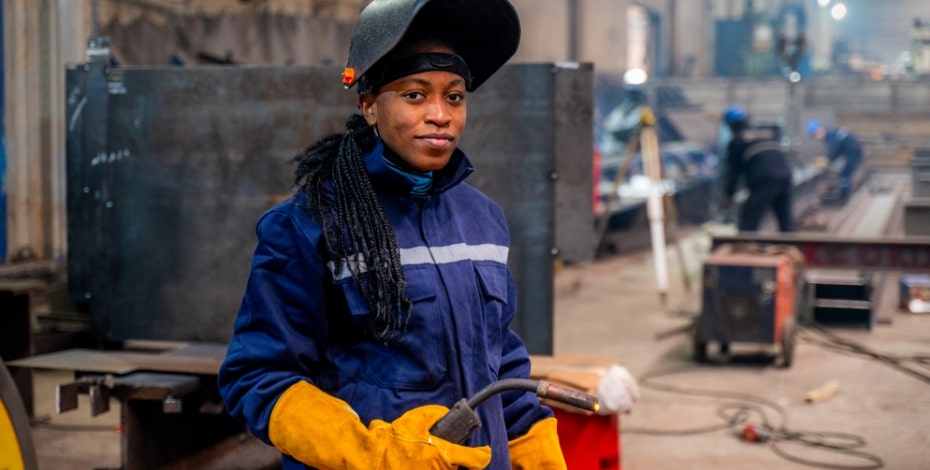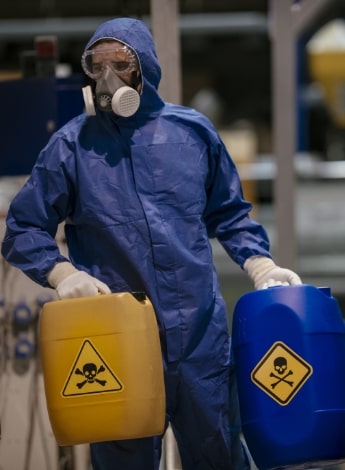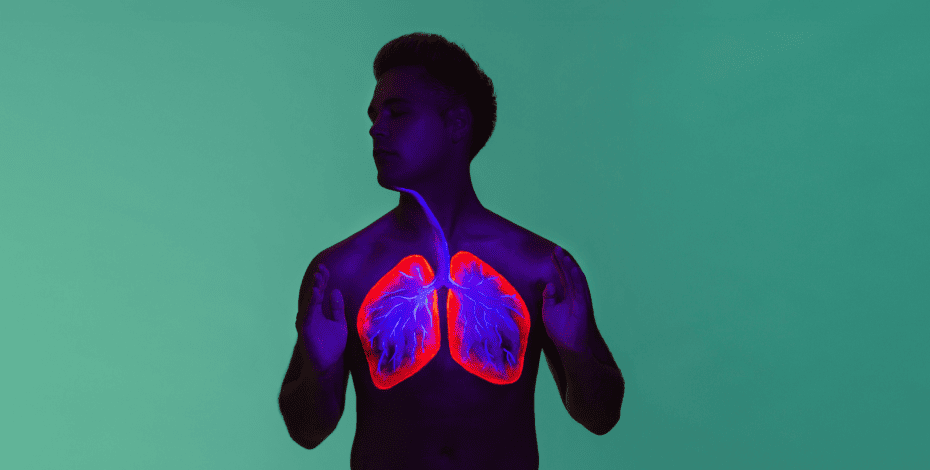
5 facts about ... workplace health and safety

October is Safe Work Month. Simon Mitchell, Michelle Strother, Marcus Mancer, Zac Lowth and Lucia Tsui of the APA Occupational Health national group present five discussion points about how physiotherapists can help keep workers physically, mentally and culturally safe.
1. Employers have a duty of care to ensure workplace safety
A person conducting a business or undertaking (often an employer) has a duty of care to ensure the safety and
wellbeing of their workers, particularly those employed in physically demanding and/or hazardous jobs.

Employees may need to work with vehicles, machinery or tools or may be exposed to environmental hazards in the workplace.
Without a strong duty of care, the risk of workplace accidents and injuries increases substantially.
Employers should implement safety protocols and safe systems of work, provide appropriate personal protective equipment and conduct training to mitigate risks effectively.
A robust approach to duty of care includes proactive measures to prevent and manage work-related health problems.
Health screenings, ergonomic assessments and access to healthcare resources all contribute significantly to maintaining the wellbeing of workers.
Along with protecting their workers from accidents and health hazards, employers can reap the benefits of a more engaged and productive workforce.
From a legal standpoint, duty of care is enshrined in Australian health and safety laws and failure to meet these obligations can lead to penalties and reputational damage for employers.
Recognising and fulfilling duty of care is vital for creating a safe and healthy work environment in Australian workplaces.
2. Strategies targeting mental health are an important component of workplace safety
Mental illness has a significant impact on our community and in the workplace.

Beyond Blue reports that 43.7 per cent of Australians between the ages of 16 and 85 will experience a mental health disorder at some point in their lives and that 21.4 per cent have had a mental health disorder in the past 12 months (Beyond Blue 2014).
The role of employers in the prevention of illness and injury in Australian workplaces now extends to the management of psychosocial hazards.
Physiotherapists can support both workplaces and individuals by:
• identifying, assessing and controlling psychosocial hazards to effectively reduce the risk of injury
• increasing physical activity as part of clinical interventions and workplace initiatives to improve outcomes for people with mental illness
• identifying psychosocial factors affecting injured workers’ recovery early to improve return-to-work outcomes.
Collectively, physiotherapists play a key role in improving the lives of the people and businesses we work with by taking an evidence-based, holistic approach to the management of both physical and psychological wellbeing.
Safe Work Month provides an opportunity to reflect on the variety of ways a physiotherapy practice can positively influence client outcomes through the inclusion of strategies to support and enhance psychological wellbeing.
3. Young workers’ brains are still developing
Approximately 14 per cent of the Australian workforce is made up of workers aged 15–24 (Safe Work Australia 2021).

A young worker’s brain continues to develop well into adulthood, which means they are more likely than older and more experienced workers to act on impulse and engage in dangerous or risky behaviour (Romer 2010).
They may not fully understand the consequences of their actions.
As far as reasonably practical, all employers have a duty of care to provide adequate information, training, instruction and supervision for young workers learning new job tasks.
To help keep young workers safe at work, employers can:
• provide thorough safety inductions, training sessions and support
• ensure an appropriate level of supervision
• take the ‘tell me, show me, watch me’
or similar ‘I do, we do, you do’ approach to new tasks
• identify a mentor who can provide feedback and support (Safe Work Australia 2021).
If physiotherapists see young workers in their clinics, they should ask if their employers are cultivating a workplace culture where people are encouraged to speak up about safety, if there is regular consultation to help workers identify and control risks and whether they know how to report unsafe working conditions.
If they are unsure, young workers can be encouraged to ask questions about safety.
4. Respectful dialogue helps to establish a culturally safe workplace
Australia is a diverse country and it’s likely that physiotherapists will encounter patients and colleagues whose culture is different from their own.

Cultural safety requires actions that recognise, respect and nurture the unique cultural identity of a person and safely meet their needs, expectations and rights.
It means working from the cultural perspective of the other person, not from a person’s own perspective.
Characteristics that indicate a culturally safe workplace include:
• clear, value-free, open and respectful communication
• trust between workers, with all contributions valued
• the recognition and avoidance of stereotypical barriers
• engagement in a two-way dialogue in which knowledge is shared.
In the context of Aboriginal and Torres Strait Islander cultures, Ahpra and the National Boards, including the Physiotherapy Board of Australia, define cultural safety as determined by Aboriginal and Torres Strait Islander
individuals, families and communities.
For physiotherapists, culturally safe practice requires ongoing critical reflection on health practitioner knowledge, skills, attitudes, practising behaviours and power differentials in order to deliver safe, accessible and responsive healthcare that is free of racism.
Safe Work Month is a good time for practitioners to look at their workplace and clinical practice and determine how cultural safety could be improved in their daily interactions.
5. A risk-based approach to prescribing sit stand workstations supports behavioural change
Sit stand workstations (SSWs) are increasingly being used in workplaces to combat the adverse health impacts of prolonged sitting.

While most workplaces would provide SSWs on request (eg, due to a medical condition), over 40 per cent reported not using them appropriately or not employing any strategies to enhance their effectiveness (Zerguine et al 2021).
The use of SSWs, especially for those living with chronic pain or recovering from injuries, should be prescribed according to a risk-based approach that identifies and assesses relevant workplace hazards.
The patient and, if indicated, their workplace should be provided with clear instructions and training based on current literature to promote optimal usage (Riddell & Callaghan 2021).
Dosage should reflect the patient’s physical and psychological capacity.
While research is ongoing, a gradual introduction is generally recommended—for example, starting at five minutes standing for every 30–60 minutes and building up to 15 minutes of standing per hour (Canadian Centre for Occupational Health and Safety 2023)—to help the body adjust while ensuring safety.
Research also supports structured breaks and postural changes using computer prompts (Garrett et al 2019).
However, constant timers could disrupt concentration, while tasks with high cognitive demands may be better performed seated (Kang et al 2021, Šömen et al 2023).
Click here for references.
>> Simon Mitchell APAM has a background in musculoskeletal physiotherapy and occupational health, with more than 25 years’ experience in injury and illness management and prevention. Simon has a master’s degree in ergonomics and is the chair of the New South Wales branch of the Occupational Health group.
>> Michelle Strother APAM has 20 years of experience in occupational health, safety, wellbeing and physiotherapy, including as a specialist advisor to internal work health and safety teams, with an interest in good work design as a social determinant of health. Michelle is a member of the Occupational Health national group.
>> Marcus Mancer APAM MACP is an APA Sports and Exercise Physiotherapist, chair of the Northern Territory branch of the Occupational Health group and director of Tangibilis Physiotherapy (Workplace Health Solutions) in the Northern Territory.
>> Zac Lowth APAM is the national chair of the Occupational Health group and General Manager Operations at JobFit Systems International and Staunch Technology. Zac is a passionate occupational physiotherapy advocate with graduate certificates in occupational health, safety and ergonomics and in musculoskeletal physiotherapy.
>> Lucia Tsui APAM MACP is an APA Occupational Health Physiotherapist and the deputy chair of the Occupational Health group. Lucia works in the private sector and is passionate about supporting and collaborating with businesses and stakeholders to drive positive change in occupational health, workers compensation and injury and illness management.
© Copyright 2024 by Australian Physiotherapy Association. All rights reserved.





